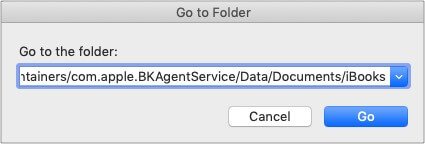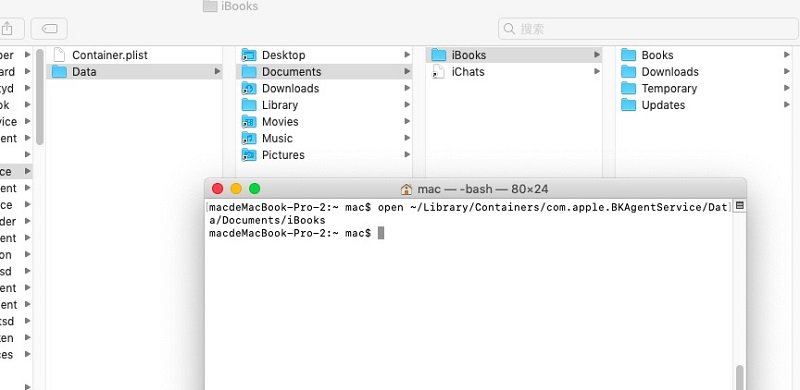Where are iBooks stored on Mac? Unlike iTunes, the flight path to the iBooks or Apple Books, with which you can access your wealth of information across many devices, is a horse of a different color.
Utilizing the iBooks for Mac app allows you to pore over item titles, author books and PDF files. The app can also monitor or sync PDFs to access content across all your devices. If you combine iCloud Drive with Apple Books, any PDFs that you throw in the app of iOS devices will automatically pop up in iBooks on your computer.
Without Books folder in the user directory or access via Finder, you must dig deeper into your bag of tricks to feast on your downloaded books in the application. Let's begin the topic of where are iBooks stored on Mac Big Sur.
Contents: Part 1. Where Are iBooks Stored on Mac?Part 2. Where Are Apple Books Stored in iCloud?Part 3. Fix iBooks Issues after Upgrading to OS X El CapitanLet’s Wrap It up
People Also Read:4 Easy Methods: How to Show Hidden Files on MacTop 2 Ways to Remove Mac Purgeable Space
Part 1. Where Are iBooks Stored on Mac?
Use Finder to Find the Location of iBooks
As opposed to iTunes, Apple Books does not offer straightforward options to change the items’ library location.
Luckily, you can still scroll through your iBooks library destination via Finder. Follow the following step-by-step instructions.
- Go to Finder from your desktop on Mac.
- Select the submenu Go To Folder from within the Finder’s Go menu.
- Enter the following command, and then hit the OK button.
~/Library/Containers/com.apple.BKAgentService/Data/Documents/iBooks

You’ll view a fresh Finder window with several sub-folders.
- Books: It saves iBooks, iBooks Author titles or PDF files.
- Downloads: It keeps files while still downloading.
- Temporary: Simply temporary files.
- Updates: New updates of your iBooks are momentarily stored here until you install.
To dive into iBooks, just hit the Books directory to launch it. Avoid making changes to your items as they warp your library matrix.
Changing Files' Location in iBooks Library
You can carve a backup of your entire library by simply pasting them into your desired folder. Abstain from erasing, renaming or tinkering iBooks from the Finder because these actions destroy the core library structure.
To erase an iBook securely, choose it in the main app and hit Delete in the Edit menu. To retitle your iBooks, access other helpful information about them or manage their meta-data, navigate to the list view by selecting the List button next to the top of the iBooks page.
Mac Tips: De-Clutter Your Computer
Junk files and digital clutter may infect your iBooks collection. A spruced-up registry allows you to hunt down items immediately due to peak performance. iMyMac PowerMyMac offers a multi-tool designed to take the performance of your computer a notch higher with a deep scan and spring cleanup. Running a thorough cleanup will ward off issues such as broken apps or untraceable iBooks. Here is a guide on How to uninstall apps on Mac, just check how PowerMyMac works!
We developed a multi-care arsenal that will get myriad worries off your chest in a click. Importantly, you can easily get rid of purgeable files like large or obsolete iBooks items, duplicates, unnecessary apps, and remnants of erased files. To maintain the integrity of your iBooks library, tidying up your Mac with a dedicated tool breathes new life into the system for optimum performance.
Purchased works from the Apple Books Store copyrighted with Digital Rights Management (DRM) restrict accessibility on other eBook platforms such as Calibre.

Part 2. Where Are Apple Books Stored in iCloud?
Where are iBooks stored on Mac? The location of downloaded iBooks depends on the type of file in question. This is because the iBooks app gives users leverage to scroll through and read purchased content from iBooks Store or compatible ePUB items that are manually added to the application.
iBooks Location for iCloud Imported Resources
Where are iBooks stored in iCloud Drive? If you import readable ePUB or PDF files into iBooks, the app syncs them via iCloud for accessibility on your iOS or other Macs. For ePUB or PDF files, these books are stashed separately from purchased pieces.
At the outset, configure your iCloud account to sync imported items. Follow System Preferences> iCloud > iCloud Drive Options to check in Books. Launch the Terminal app along with the iBooks folder with the open path.
open ~/Library/Containers/com.apple.BKAgentService/Data/Documents/iBooks

This open pathway will launch a Finder page showing all of your imported iBooks files. Given that you introduced files to the iBooks app, you shouldn’t grapple with DRM. Accordingly, you can copy or backup files for utility in other apps amenable to the ePUB format.
Backing Up Individual Apple Books
If you only wish to backup one or a few books, you can instead open the iBooks app, trace and download your preferred work. Next, click and yank the item from the app onto your desktop or folder in Finder. This procedure will generate a properly named ePUB, which you can physically drift or back up. Similar prohibitions with DRM for bought books apply.
Part 3. Fix iBooks Issues after Upgrading to OS X El Capitan
Now you have known where are iBooks stored on Mac. But after upgrading OS X EL Capitan, you may encounter issues with iBooks path to book library. It may display a blank window, or show an error that signals iBooks cannot open library. Sometimes, it reports the disk that stores the library cannot be traced.
First, try refreshing your iBooks account by logging out and back into the store. Use the options in the menu to de-authorize and then re-verify your system. After that, quit and re-open iBooks to check if your library items appear.
Mac Tips to Fix iBooks Issues
Reset your iBooks Library
- Quit iBooks app.
- Press the Option key and select Library in the Go menu from the Finder.
- Launch the Containers folder in the page that comes up.
- Move the directory titled com.apple.iBooksX to the Desktop.
- Move the directory titled com.apple.BKAgentService to the desktop.
Access PDF Originals
- Launch the com.apple.BKAgentService directory you had moved to the Desktop.
- Go to Data> Documents> iBooks> Books folder.
- Home in the PDFs that have gone out of sight.
- Drag the items to a location of your choice to salvage them, and then move them into iBooks.
Let’s Wrap It up
We hope you have learnt the ins and outs of where are iBooks stored on Mac. You can even flip through your items library location manually in the finder with the fast, easy steps outlined above. Use the full path to books you’ve downloaded to cut the red tape. If you’ve an active account signed into iCloud, you will get back up across devices.
After upgrading to Mac OS X 10.9, most eBook enthusiasts exude newly-found confidence for the Mac app. But users report this racks their brains when they try to hunt down EPUB files in iBooks. Try our tricks to zero in your files with simple clicks.
We hope you enjoyed our article, share it on social media.



